MPC’s VFX supervisor Seth Maury and the team at MPC Vancouver 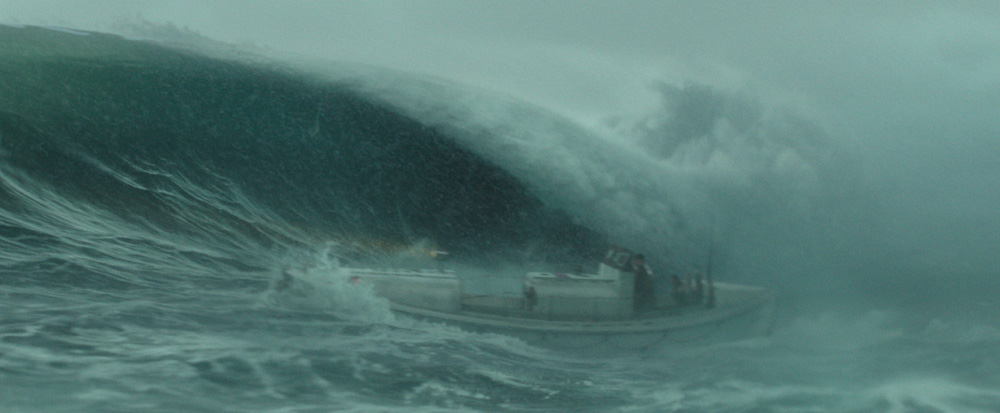
created the massive seas and storm sequences driving the true
story behind the film ‘The Finest Hours’.
MPC Rides the Storm for ‘The Finest Hours’

MPC’s VFX supervisor Seth Maury and the team at MPC Vancouver created the massive seas and storm sequences driving the true story behind the film ‘The Finest Hours’, following a dramatic boat rescue undertaken by a Coast Guard crew off the coast of Cape Cod in New England. MPC’s team completed some 300 large-scale water simulation shots, 300 weather and environment shots and 300 shots of the ocean behind actors shot on bluescreen.
The rescue took place in 1952 when one of the worst storms ever recorded struck the New England coast, damaging an oil tanker and ripping it in half. On a small lifeboat, the Coast Guard's 36ft boat set out to rescue the sailors trapped aboard the sinking vessel. The most challenging part of the project for MPC was recreating the storm itself, which involved ocean swells, turbulent seas, blowing rain and snow, and a sequence in which the Coast Guard boat crosses a digital version of Chatham Bar while 10 to 15m waves roll, swell and crash around it.
The live action shoots of the Pendleton T2 tanker and various rescue boats were carried out in a 120ft by 80ft and 12 ft deep water-tank built for the shoot at a warehouse in Fore River Shipyard in Quincy, Massachusetts. The production had physically built a large gimbal set with the Coast Guard CG36500 rescue boat and restored four period rescue boats. They also built a full-size mock-up of the Pendleton hull, and a replica of the Pendleton engine room that could be flooded with 6ft of water. Scenes were also shot in Cape Cod at locations near where the historical events happened.
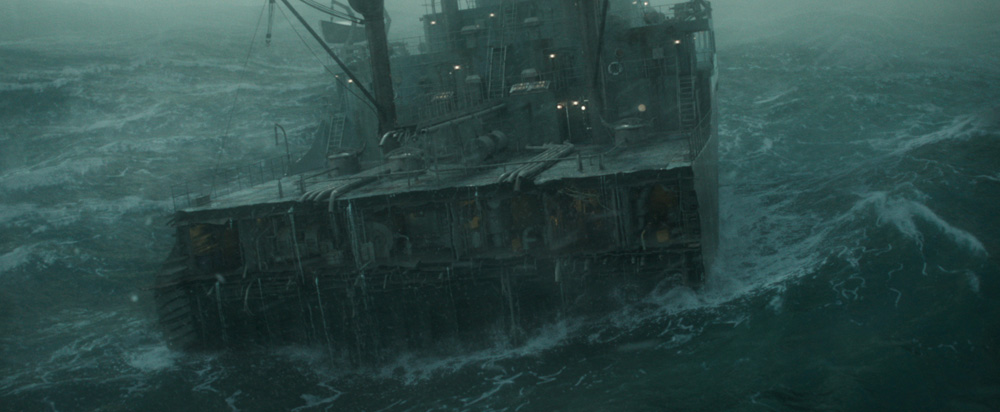
Story-Driven
MPC spent some months on previs before principle photography began in the autumn of 2014 to make sure they could match the looks the director Craig Gillespie wanted. He had supplied abundant reference made up of stills and videos of ships in storms, all of them practical, real-incident references. They had to learn how to differentiate between breaking waves, stormy waves, short brief waves, long 60-footers - and a myriad of others. For any of these and at any time, including the largest full CG water simulation shots, they needed complete control of how the water looked and behaved.
Seth said, “Because this is a dramatic story that needs to drive whatever the viewer sees happening in the environment, we wanted to be able to use the director’s expectations regarding waves and ocean surfaces as our start point and work backwards toward a digital rendition of that same look and behaviour, which called for a component approach that would prepare us for any request.
“Consequently, a component-based pipeline was built, which worked in a different order than usual on a CG project. Normally, the artists build a 3D environment, then position cameras according to where a scene takes place and then build bespoke effects, looks and CG assets from the ground up, scene by scene, according to those cameras.
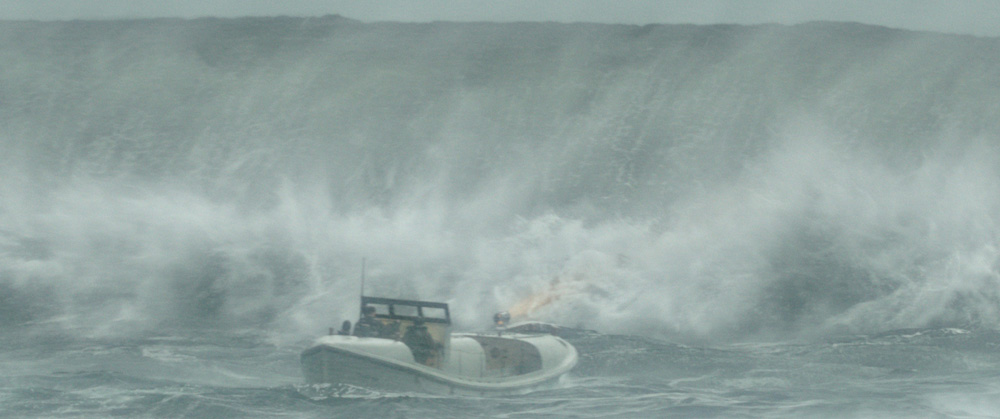
“In this case, we set up five basic types of base ocean and wave looks in advance, each with a collection of associated FX elements such as rain, mists, spray, foam and so on, which we handed to the animation and layout team to build and animate the scenes from. To make various ocean surfaces available, the animation team, led by Tom Goodenough, also worked with a wave rig with numerous controls that they could feed to their ocean solvers. This gave the artists choices to work with and at the same time resulted in consistency and prevented them from having to start from scratch for each scene.”
Having so much physical reference on set and in camera from the water-tank shoot also gave the team a chance to prepare themselves for editorial changes. In order to be able to re-create the action in full CG when necessary, MPC’s team built digital doubles of the crewmembers, as well as digital versions of the Pendleton and Coast Guard boat to combine with their digital ocean. To support the modelling, the ship, hull and boats could be extensively photographed and the actors were scanned as well for more accuracy.
Fluid Control
Precisely controlling the animation was particularly important for this project because of the story-focus during storms. Head of FX Adriano Rinaldi said, “The goal wasn’t just big, general, realistic-looking storms. The waves within each type had to take a specific role. For example, a sequence following the CG36500 Coast Guard boat crossing Chatham Bar in massive seas involved waves in various states of swelling, crashing, dumping and spilling. MPC developed simulations for each of these, and others for introducing layers of waves into the scene.
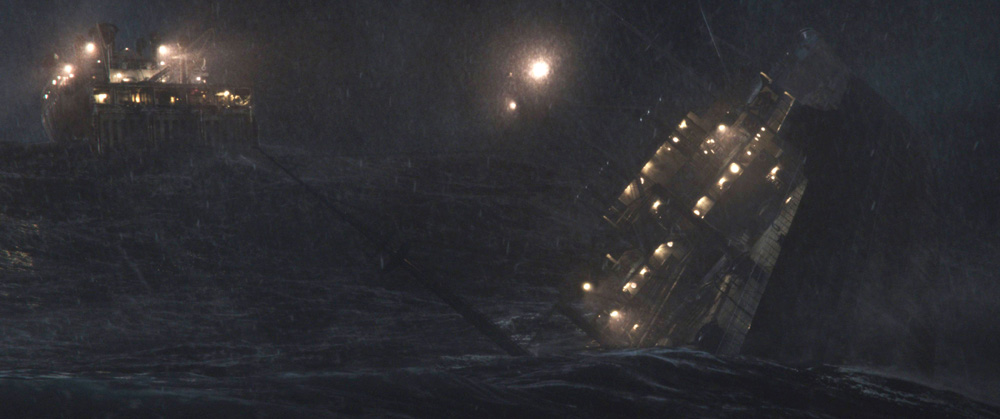
“‘The Finest Hours’ was an opportunity for MPC to further develop our fluid pipeline. The team had made substantial fluid advances for the storm sequences in 'Life of Pi’, but the performance and appearance of the water were not as specific. The massive seas created for Exodus had only been needed in five or six shots.”
The need for authentic-looking interactions between the boats, shore and water was another kind of water effect, and called for further practical reference. From a drone, video and stills were captured over the coast of Vancouver near the MPC studio, giving them reference of interactions from a similar position to the camera in the movie.
Before taking on this project, Seth Maury had considered that a simulation would supply all the detail required from any angle. “But some shots in this sequence had to be designed and completed as single one-off waves,” he said, “viewed and detailed to work with specific cameras. One of these looked down the length of a crashing wave from inside it. In another the viewer, or camera, is pushed along and backwards by a wave that had already crashed.”
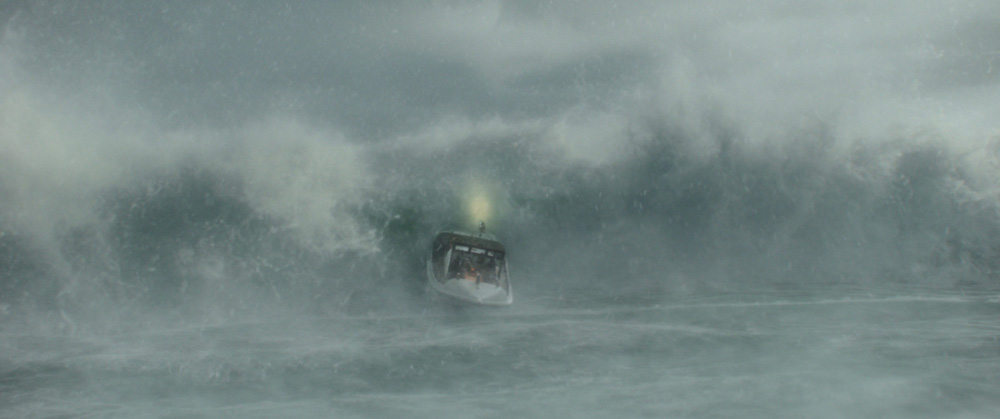
Layering the Storm
The ocean pipeline consisted of Maya for rigging and animation, layout and the geometry, Houdini for environmental effects including rain and snow, and FlowLine to create the wave and surface simulations. Rendering of the work from FlowLine was done through V-Ray and Renderman. RenderMan, which is somewhat more flexible regarding pipeline integration, was used for animations and to control the shaders and lights.
A huge variety of mists were produced as generic mists to build up looks for different levels of storminess. Adriano described one of these in particular, a continuously blowing mist the team named ‘speed mist’ that was composited over the live action shots and full CG shots, made up of multiple layers generated from Houdini.
Renders for compositing were especially crucial for this project as they were the final opportunity to give the animations and simulations the correct look. The compositors started with the base ocean render and could then add any of these various render passes for foam, spray, mists, plus water texture, refraction and reflection passes for the water surfaces. Seth’s early career was spent working on films as a compositor and he was aware of the value of giving the compositing team plenty of choices in looks, and keeping options open for the director. www.moving-picture.com
Words: Adriene Hurst
Images: Courtesy of Walt Disney Pictures


















